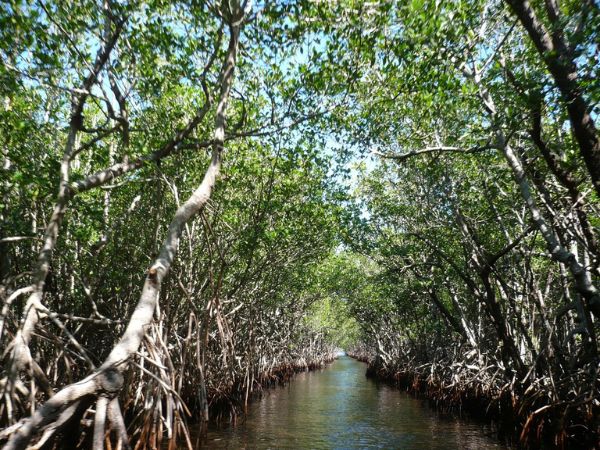It is a matter of immense pride that the total Ramsar sites in our country have now risen from 49 to 54. India has designated five new wetland sites of international importance.Three of these sites are from Tamil Nadu, one is from Mizoram and the other is from Madhya Pradesh.

Official announcement
Informing the nation about the news, Environment Minister Bhupendra Yadav tweeted on Tuesday, "Delighted to inform that 5 more Indian wetlands have got Ramsar recognition as wetlands of international importance".
Among these are Karikili Bird Sanctuary, Pallikaranai Marsh Reserve Forest, Pichavaram Mangrove in Tamil Nadu, Sakhya Sagar in Madhya Pradesh, and the Pala Wetland in Mizoram.
The emphasis PM Shri @narendramodi ji has put on environmental protection and conservation has led to a marked improvement in how India treats its wetlands.
— Bhupender Yadav (@byadavbjp) July 26, 2022
Delighted to inform that 5 more Indian wetlands have got Ramsar recognition as wetlands of international importance. pic.twitter.com/VZDQfiIZN8
Five new wetland sites:
Karikili Bird Sanctuary-
House of More than 100 bird species, the Karikili Bird Sanctuary in the Kanchipuram district has made it to the latest list. Located 86 km from Chennai, it is famous for several mammal, reptile and amphibian species such as the jungle cat, bonnet macaque, jackal, python, sand boa and frogs. Further, many migratory birds like garganey teals, shovellers, pintails, stilts, sandpipers, etc., pay visit to this sanchuary. The Site is flat or gently undulating and fibs near low cliff, stony hillocks.The vegetation is mainly composed of Barringtonia acutangula and Acacia nilotica trees.
Best time to visit: The winter season
Pallikaranai Marsh Reserve Forest -
Situated near the Bay of Bengal, it is a freshwater marsh (a type of Wetland) in Chennai and an important part of the large marine ecosystem. Mking Tamil Nadu a part of the list, the Pallikaranai Marsh is one of the last remaining natural Wetlands in Chennai. Rich in biodiversity, this Wetland is home of 115 bird species, ten mammals, 21 reptiles, ten amphibians, 46 fish, nine molluscs, five crustaceans, and seven butterfly species. These include notable species such as Russell's viper and birds such as the glossy ibis, grey-headed lapwings and Pheasant-tailed jacana.
Best time to visit: December to February
Pichavaram Mangrove -
Located in one of the largest mangrove forests in India, this Wetland provides shelter to about 180 species. The Pichavaram Mangrove, another wetland from Tamil Nadu, is a well-developed mangrove forest covered with Rhizophora spp., Avicennia marina, Exocaria agallocha, Bruguiera cylindrica, Lumnitzera racemosa, Ceriops decandra and Aegiceras corniculatum.
Best time to visit: November to February
The Pala Wetland -
Pala Tipo / Pala or Palak Lake is a natural lake located in the village of Phura in the Siaha district of Mizoram. Palak lake is the largest lake in the state. Being surrounded by lush green forests and mountains, the wetland provides home to a variety of animal species, including sambar deer, wild pig and barking deer. Various species of primate also inhabit the wetland, such as the endangered Hoolock gibbon and Phayre's leaf monkey, are also found here. Pala Wetland, earmarked by the local Mara people, has a deep connection with their history.
Best time to visit: September to March
Sakhya Sagar -
Sakhya Sagar Lake in Shivpuri is a major tourist attraction bordering the forests of Madhav National Park. The Sakhya Sagar Lake is formed from the Manier river in 1918. The lakes sustain the bio-diversity of the surrounding forest in the Park. This important part of the eco-system has wild animals, birds and reptiles living harmoniously.
Best time to visit: Throughout the year except monsoons
2022, An important year in this regard-
Earlier this year, on February 2 (World Wetlands Day), India added Khijadia Wildlife Sanctuary in Gujarat and Bakhira Wildlife Sanctuary in Uttar Pradesh to the list of Ramsar sites. Before the acquisition of Bakhira and Khijadia Wildlife Sanctuary, Haiderpur wetland from Uttar Pradesh has made it to the list of Indian wetlands of international importance. And now these three are adding feathers in the cap.
Significance of wetlands in tourism-
This achievement will not only help in raising international visibility but also increase local tourism. A home to waterbirds with many flora and fauna, Wetlands also serve as a platform for scientific and educational activities.
The wetlands are home to many plants (terrestrial and aquatic) and animals (terrestrial, aquatic, amphibians, reptiles, birds, and insects). Wetlands are famous as destinations among nature lovers and tourists. As Uttar Pradesh has the maximum number of Ramsar sites among the 54 in India, the state has already announced its plan to promote selected wetlands of international importance (Ramsar Sites) as tourist spot, educational, recreational and water sports hubs.
With this, tourists and nature lovers have got more sites to explore in India.



 Click it and Unblock the Notifications
Click it and Unblock the Notifications
























